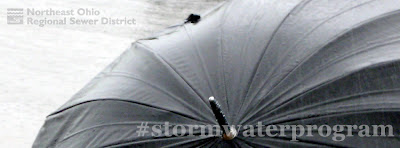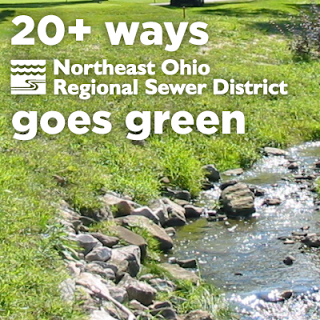
20 WAYS: Going green well beyond clean
Posted by Jared Shepherd
- 4814 Views
- October 9th, 2012
- in Miscellaneous
- No Comments
Sure, we’ve been recycling water since before recycling was cool, but in our line of work, don’t we have expectations to do even more when it comes to sustainability?
We do. And we are.
As a clean-water agency, part of our plan to become a regional environmental leader is the expansion of cost-effective, eco-friendly practices throughout our day-to-day operations.
To complement our recycling program (paper and cardboard, plastic, glass, aluminum, batteries, and motor oil), we assess everything—from the light bulbs we use to our electrical and heating systems, our business practices, and our use of local vendors.
Here are just some other environmentally minded efforts at work across the District:
- Computerized energy systems at all facilities shut down building air handlers during off hours to conserve energy.
- Auto-flush bathroom fixtures at all facilities save water, and electric hand dryers at our Environmental and Maintenance Services Center (EMSC) reduce paper waste.
- Energy-efficient canister lights in offices and other lower-wattage fixtures, in addition to light timers in EMSC garages
- Using only one of two water heaters at EMSC saves 104 kilowatts of energy a day and saves the district approximately $3,000 a year in energy costs.
- Eliminating bottled water and styrofoam products at large group meetings.
- Replacing paper products with re-usable plates and silverware for Trustee meetings.
- A rain garden installed at our Administration Building and an upcoming rain barrel project reduce runoff and provide us with water for landscaping.
- Permeable pavement installations at Southerly and offsite (W. 140th and Puritas) also reduce runoff.
- Our printers and copiers (and yes, even a fax machine or two) feature recycled paper.
- We use environmentally friendly cleaning products.
- Our Payroll department offers a paperless paystub process for employees.
- Rain sensors shut off sprinkler systems at our Cleveland and Cuyahoga Heights facilities.
- The District also has been utilizing more of the plant effluent (non-drinkable water) in process areas to conserve on water usage.
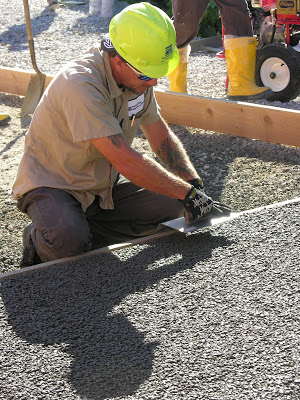 |
| Pouring a pervious concrete access road near West 140th Street in Cleveland. |
Construction projects
A priority of ours is developing sustainable design standards. We strive to minimize our carbon footprint on all major construction projects, from an energy-consumption perspective and in terms of reducing emissions and pollutants.
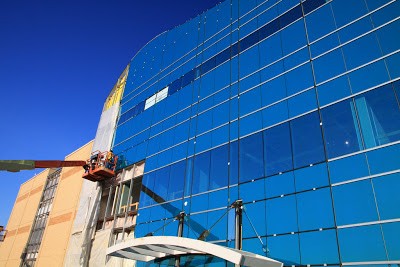 |
| Installation of energy-efficient glass panels on LEED-certified Renewable Energy Facility. |
At our Southerly treatment plant, we are replacing aging incinerators with more-efficient furnaces that can both reduce carbon-dioxide emissions and generate electricity, while minimizing the plant’s carbon footprint. Upon completion, this project, known as the Renewable Energy Facility, will be LEED (Leadership in Energy and Environmental Design) certified—an international recognition of environmentally sound building standards and practices.
Stormwater management
We are continuing to better manage the impacts of wet weather, also known as stormwater. Stormwater creates land erosion that leads to flooding and the transport of pollutants to local streams, rivers, and Lake Erie. Stormwater-related problems must be addressed regionally because what happens in one community can affect another
The District’s Regional Stormwater Management Program will coordinate and integrate the efforts of numerous communities and environmental agencies to address problems where multiple communities would all benefit.
Restoring streams
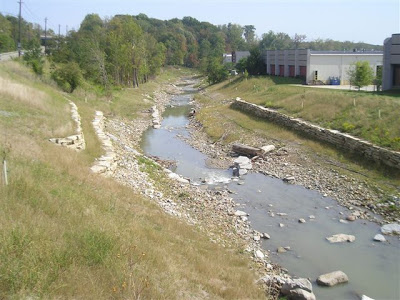 |
| Stream restoration to widen floodplain along West Creek. |
While reducing pollution, we want to be at the forefront of a holistic approach to watersheds and stream restoration.
We work closely with communities to restore streams that have degraded due to erosion or in terms of habitat. This results in better control of stormwater flow and improved fish and aquatic bug habitats.
Project Clean Lake
Since 1972, our projects have drastically reduced sewage discharges into our waterways. In 2011, we entered into an agreement with the U.S. Department of Justice, U.S. Environmental Protection Agency, and Ohio Environmental Protection Agency to further eliminate discharges.
The plan by which the District will reach this goal is called Project Clean Lake. It includes seven major deep tunnels and enhancements to our treatment plants.
The District also negotiated for opportunities to replace “gray infrastructure” components of the plan (tunnels, etc.) with green infrastructure (bioswales, detention ponds, etc.).
The Sewer District will work with the City of Cleveland to leverage the use of vacant lots for green projects and economic development opportunities. This could enhance neighborhoods, provide economic development opportunities, and rebuild our community.
Story by Mike Uva

